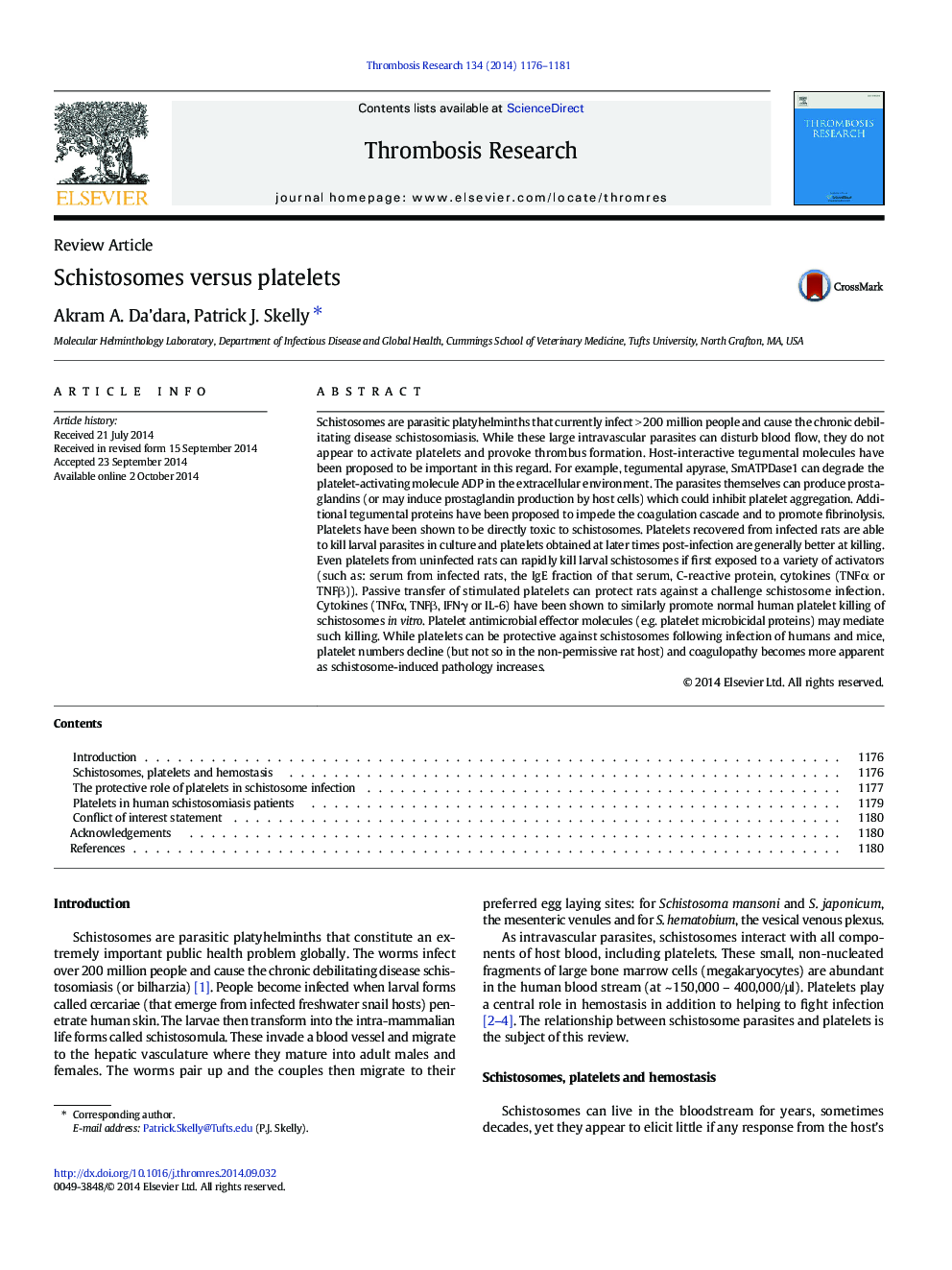| کد مقاله | کد نشریه | سال انتشار | مقاله انگلیسی | نسخه تمام متن |
|---|---|---|---|---|
| 6002179 | 1182966 | 2014 | 6 صفحه PDF | دانلود رایگان |
- Intravascular schistosomes (blood flukes) appear not to activate platelets.
- Parasite tegumental molecules (e.g. SmATPDase1) may inhibit platelet activation.
- Platelets (especially from infected rats) can kill schistosome larvae.
- Several effectors can activate platelets to kill schistosomes.
- These include immune serum, IgE, C-reactive protein, TNFα, TNFβ, IFNγ or IL-6.
Schistosomes are parasitic platyhelminths that currently infect > 200 million people and cause the chronic debilitating disease schistosomiasis. While these large intravascular parasites can disturb blood flow, they do not appear to activate platelets and provoke thrombus formation. Host-interactive tegumental molecules have been proposed to be important in this regard. For example, tegumental apyrase, SmATPDase1 can degrade the platelet-activating molecule ADP in the extracellular environment. The parasites themselves can produce prostaglandins (or may induce prostaglandin production by host cells) which could inhibit platelet aggregation. Additional tegumental proteins have been proposed to impede the coagulation cascade and to promote fibrinolysis. Platelets have been shown to be directly toxic to schistosomes. Platelets recovered from infected rats are able to kill larval parasites in culture and platelets obtained at later times post-infection are generally better at killing. Even platelets from uninfected rats can rapidly kill larval schistosomes if first exposed to a variety of activators (such as: serum from infected rats, the IgE fraction of that serum, C-reactive protein, cytokines (TNFα or TNFβ)). Passive transfer of stimulated platelets can protect rats against a challenge schistosome infection. Cytokines (TNFα, TNFβ, IFNγ or IL-6) have been shown to similarly promote normal human platelet killing of schistosomes in vitro. Platelet antimicrobial effector molecules (e.g. platelet microbicidal proteins) may mediate such killing. While platelets can be protective against schistosomes following infection of humans and mice, platelet numbers decline (but not so in the non-permissive rat host) and coagulopathy becomes more apparent as schistosome-induced pathology increases.
Journal: Thrombosis Research - Volume 134, Issue 6, December 2014, Pages 1176-1181
